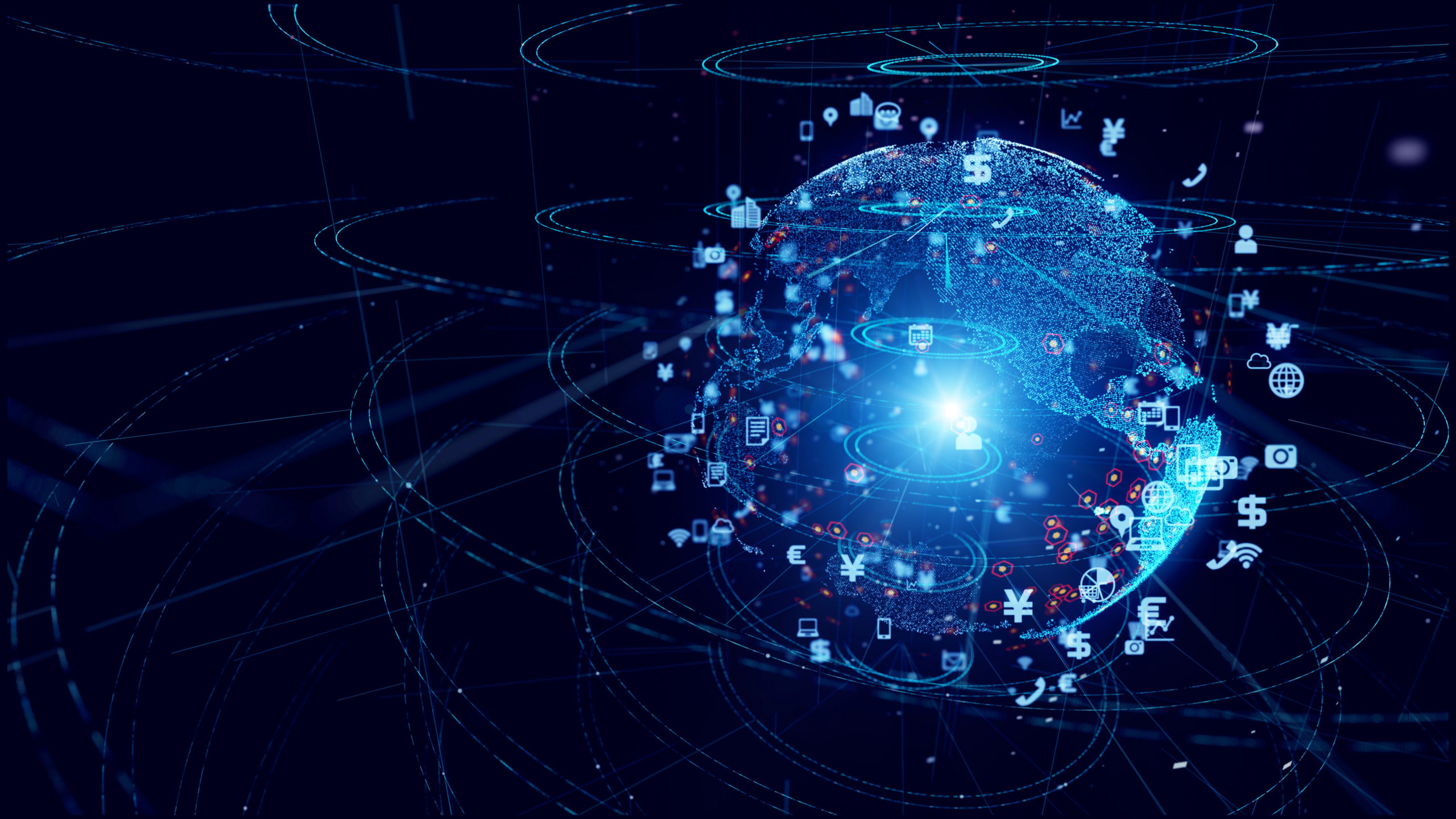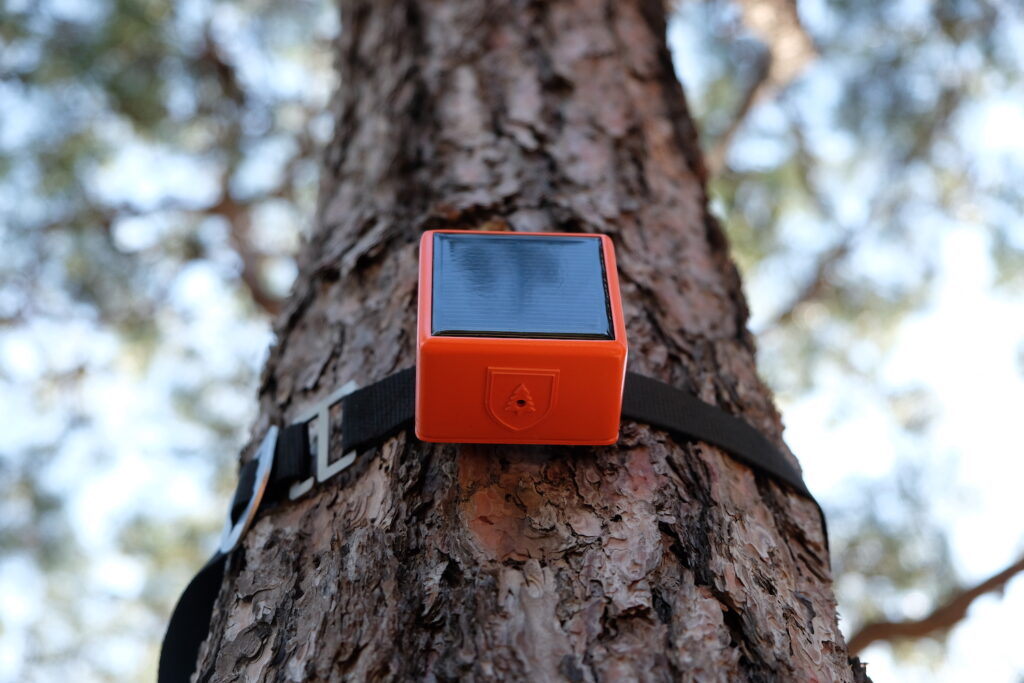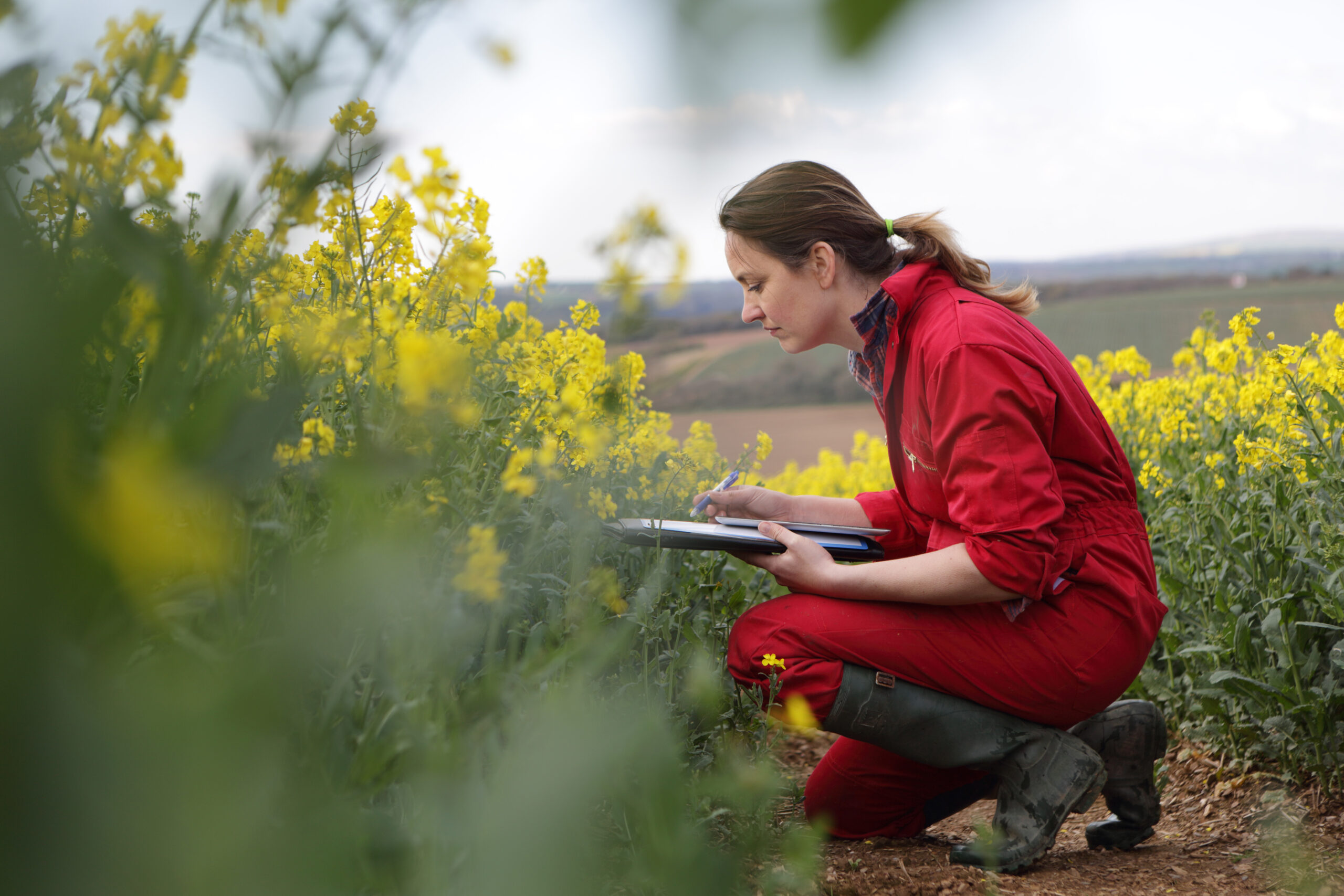
Introduction
The Transformative Impact of Satellite IoT Deployments
The incredible potential of the Internet of Things (IoT) is becoming increasingly clear, with valuable solutions being developed across a broad range of industries. As demand grows for seamless connectivity that extends beyond urban areas to the most remote parts of the globe, satellite emerges as a key solution. By leveraging this far-reaching resilient coverage, real-world satellite IoT deployments offer significant benefits to sectors whose assets may otherwise be out of reach. From agriculture to maritime exploration, satellite IoT unlocks enhanced efficiencies, safety, and sustainability.
Purpose and Expertise
This guide is designed to showcase the vast potential of real-world satellite IoT deployments, highlighting how this technology can help overcome challenges and create more new opportunities than ever before.
At EchoStar Mobile, we aim to drive forward the boundaries of connectivity. We collaborate with partners, such as device manufacturers, original equipment manufacturers (OEMs), and system integrators who leverage our satellite IoT network solutions, helping bring to market innovative devices that deliver a broad spectrum of benefits in their industries.
With our expertise in this space, we will delve into a number of real-world satellite IoT deployments, exploring both active and theoretical applications and sharing how satellite IoT can be the cornerstone of innovative, efficient, and resilient communication systems across various sectors.
The Current Landscape of Satellite IoT
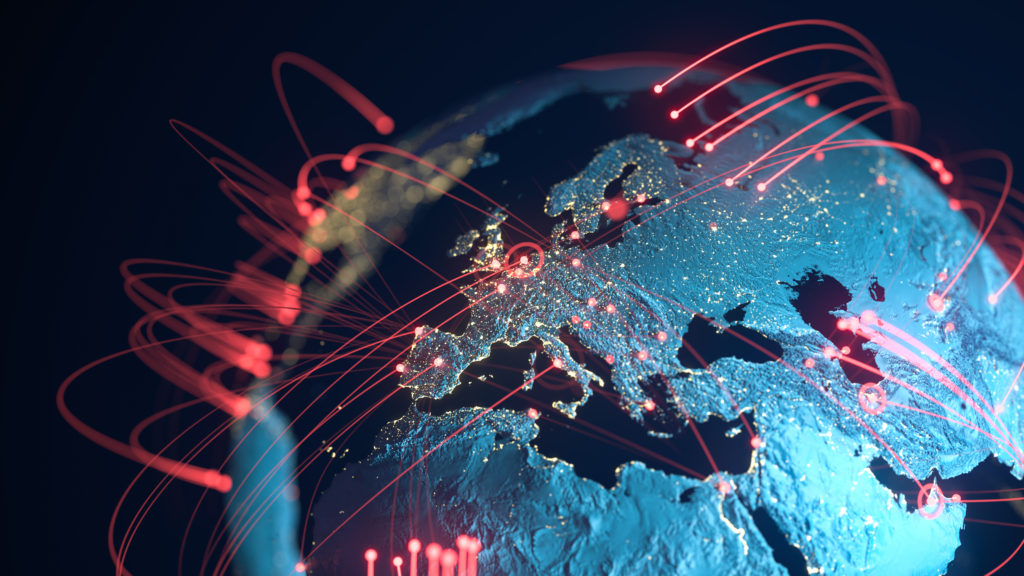
Satellite networks can offer seamless connectivity across the entire globe. When utilised for IoT, they remove the coverage limitations of traditional terrestrial solutions and unlock the opportunities for devices and people to access data from any region in the world, no matter how isolated or challenging.
Satellite IoT is a pioneering technology in the connectivity landscape. With it being so cutting-edge, developments are fast-moving, with new opportunities and ideas emerging regularly.
Currently, most satellite IoT deployments operate over either GEO or LEO satellite networks. Many solutions leverage LoRa® (Long Range) technology to enable devices to send and receive data. However, another emerging technology in this space is 3GPP IoT-NTN (Non-Terrestrial Networks).
These innovative connectivity technologies are designed to deliver extensive reach, performance and reliability. LoRa® is a standardised technology that excels in low power consumption, cost-effectiveness and scalability. Meanwhile, developments in NB-IoT over NTN aim to deliver benefits in improved data rates, signal penetration and power efficiency. Both have their advantages and limitations. Therefore, as these technologies evolve, it will become more apparent which ones will be most suited to different deployment types.
Satellite IoT offers a multitude of tangible benefits. By extending connectivity to the furthest reaches of our planet, it enables real-time data collection, monitoring, and control of assets located in previously inaccessible areas. This capacity for fast data-sharing across the globe enhances operational efficiency and significantly improves decision-making processes, safety protocols, and sustainability efforts for a broad range of industries.
You can explore the technology behind satellite IoT in more detail in our previous guide: A Complete Guide to Satellite IoT.
Real-World Satellite IoT Deployments
The scope of opportunities for real-world satellite IoT deployments is immense. Their benefits of seamless connectivity and massive data collection in some of the most remote and challenging locations on Earth solve a wide range of industry challenges. This technology is transforming operations in areas previously beyond the reach of traditional networks.
It’s a relatively new and extremely exciting area of digital communications, and while there are numerous deployments already active and proving highly valuable, some still exist as ideas or prototypes under development.
In this section, we take a look at the work of some of our partners who have implemented real-world satellite IoT deployments in their sectors. We also explore other potential use cases where solutions may be deployed by other providers, be newly emerging or still under development.
Critical Infrastructure Monitoring
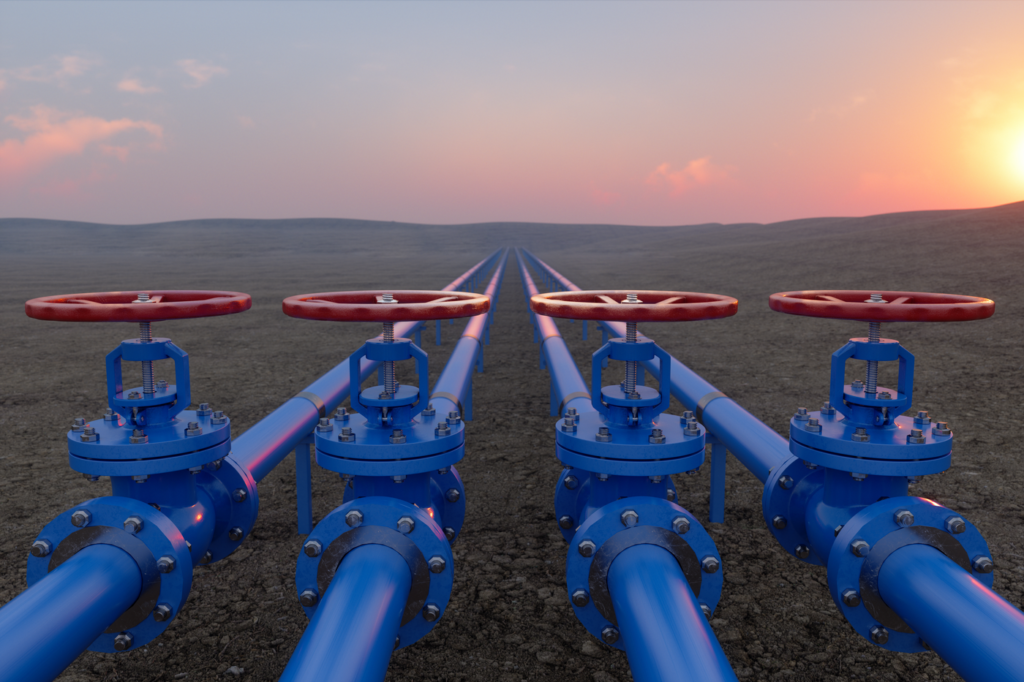
Satellite IoT stands to revolutionise critical infrastructure monitoring, offering a new level of resilience and reliability to vital services that sustain modern life. By enabling consistent, remote surveillance and management of essential utilities and structures, this technology ensures that even the most isolated or vulnerable assets remain under vigilant oversight.
Here are two examples of real-world satellite IoT deployments already on the market by our partner, ProEsys:
Integrity and Vibration Monitoring Sensor
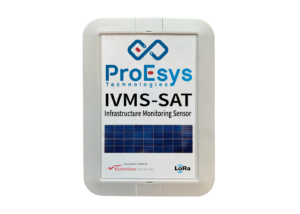
The Integrity and Vibration Monitoring Sensor (IVMS-SAT) is a cutting-edge solution for monitoring the structural integrity of any industrial structure or application. Designed for real-time surveillance of inclinations and vibrations, it’s particularly beneficial for safeguarding critical infrastructure like high-voltage pylons, broadcast towers and bridges. It also transmits data on damage to infrastructure due to human activities or natural events, thereby protecting surrounding communities.
By sending and receiving data over satellite and terrestrial LoRaWAN®, the IVMS-SAT enables instant alerts to anomalies, promoting swift action, minimising potential damage and enhancing safety. With easy deployment requiring no additional infrastructure and robust design, the IVMS-SAT makes remote management more responsive, effective, cost-efficient and safe.
Cathodic Protection Detection System and Sensor (CP-SAT)
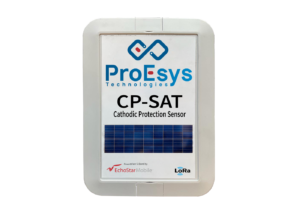 The Cathodic Protection Detection System and Sensor (CP-SAT) provides long-term, continuous, real-time monitoring of cathodic protection systems, crucial for preventing corrosion in the Oil & Gas industry’s metal pipelines. Its advanced features enable precise reading and remote control. The device uses bi-directional LoRa®-enabled satellite and terrestrial connectivity to monitor cathodic protection voltages and currents accurately. It is also equipped with local analysis capabilities to trigger alarms instantly if thresholds are exceeded.
The Cathodic Protection Detection System and Sensor (CP-SAT) provides long-term, continuous, real-time monitoring of cathodic protection systems, crucial for preventing corrosion in the Oil & Gas industry’s metal pipelines. Its advanced features enable precise reading and remote control. The device uses bi-directional LoRa®-enabled satellite and terrestrial connectivity to monitor cathodic protection voltages and currents accurately. It is also equipped with local analysis capabilities to trigger alarms instantly if thresholds are exceeded.
The CP-SAT ensures long-lasting use with a waterproof design and energy-generating photovoltaic panel. Enhancing pipeline management, this device offers a proactive approach to reducing the costly impacts of corrosion.
Remote Smart Water Metering
Satellite IoT is set to play a crucial role in the water management sector by enabling remote smart water metering in even the most inaccessible areas and simplifying the communication technology required. Recent research reveals that the average person uses 152 litres of water daily. Moreover, 94% underestimate this water usage drastically, meaning action is urgently needed.
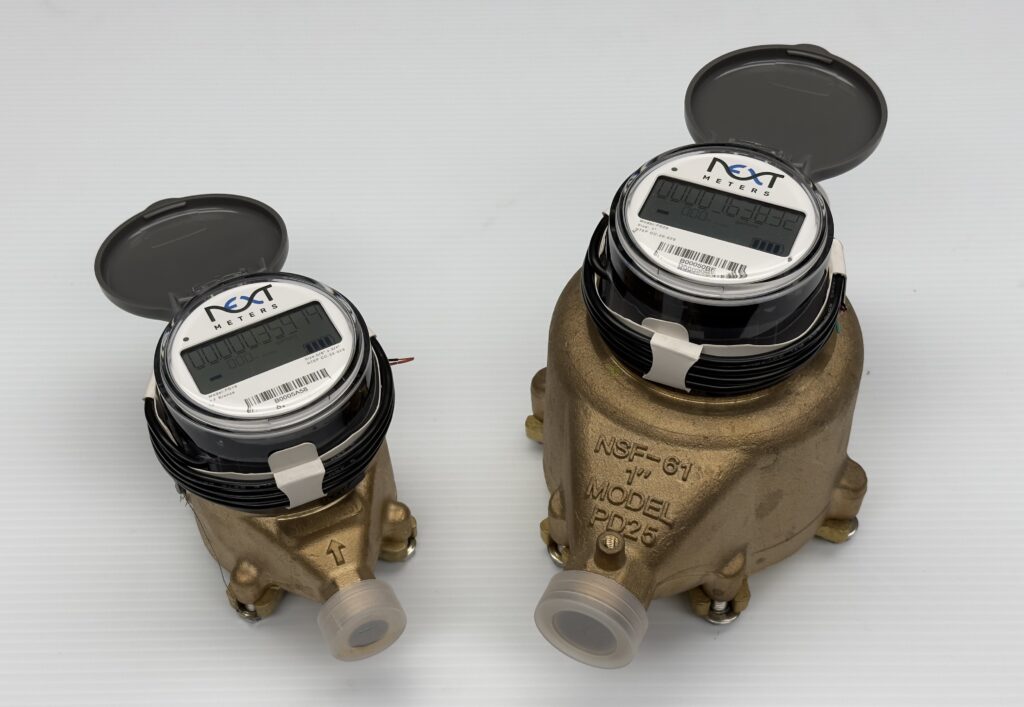
Historically, the complexity and cost around the multiple communication technologies needed to implement the data transfer process in smart metering have hindered its deployment. Satellite IoT provides a solution to these challenges, simplifying the process to make it more cost-efficient and scalable.
Our partner Galaxy 1 leverages our direct-to-satellite IoT network to deliver considerable advantages in driving the widespread roll-out of smart meters. With this technology, the adoption of smart meters can be accelerated, providing critical data for sustainable resource management and addressing the urgent need to conserve this precious resource.
Smart Agriculture
The opportunities for real-world satellite IoT deployments in agriculture have the potential to transform activity in this sector. This breakthrough monitoring technology can offer unprecedented advantages by enabling precise, real-time data collection across vast and remote areas. It can support sustainable farming practices, optimise resource use, and boost crop yields. With these benefits, satellite IoT will likely become an indispensable tool for modern agriculture, where challenges like growing global food demand, increasing regulations, and climate change are immense.
One valuable solution for agricultural monitoring is the Dales Land Net Soil Monitor. It collects data on soil moisture, temperature across six depths to 50 cm, and overland water flow. The Dales Land Net Soil Monitor is a solar-powered, self-charging telemetry unit that records updates every 30 minutes. It is designed to withstand harsh weather conditions yet is easy to install.
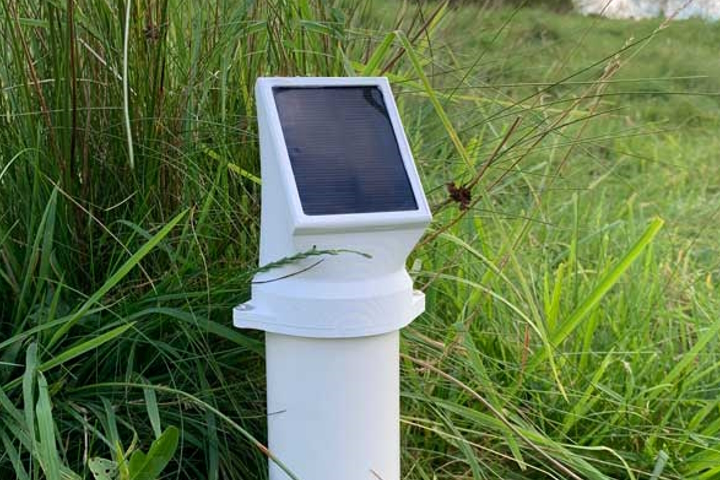
Using our direct-to-satellite LoRa®-enabled network, the Dales Land Net Soil Monitor sends the data collected to a customisable dashboard for real-time soil insights, supporting optimised irrigation, fertilisation, and crop yield strategies. With many other existing monitoring solutions being complex and expensive, the Dales Land Net Soil Monitor offers an accurate, affordable solution that can support efficient, sustainable farming processes —even in remote areas challenged by network coverage.
Environmental Monitoring
Harnessing the power of satellite IoT can also unlock new possibilities for environmental monitoring, delivering vital data from the most remote areas directly to conservationists and researchers. This advance in communications technology offers a powerful tool for tracking ecological changes and supports the proactive management and protection of our planet’s precious natural resources.
One environmental area of critical concern is the increase in wildfires. Our partners, ForestGuard and Dryad Networks, have developed innovative solutions for tackling this concern, which are already proving highly beneficial.
ForestGuard IoT devices offer advanced forest monitoring and protection by detecting fire risks and anomalies using smart sensors. These devices leverage LoRa® technology over satellite and terrestrial networks for real-time, hyper-local data transmission, enabling precautionary action and disaster avoidance. ForestGuard IoT devices require no additional gateway infrastructure and are easy to install on trees, poles, or structures, with precise positioning enabled via their inertial sensors and inclinometers. The devices use solar energy for power with optional battery backups, making them eco-friendly. Meanwhile, their waterproof and temperature-resistant qualities ensure their durability.
Also addressing this environmental concern, Dryad’s Silvanet Suite offers a comprehensive approach to wildfire prevention and forest health management. The Silvanet Suite combines ultra-early wildfire detection with microclimate monitoring through a network of solar-powered sensors and gateways, feeding data into a cloud platform for analysis.
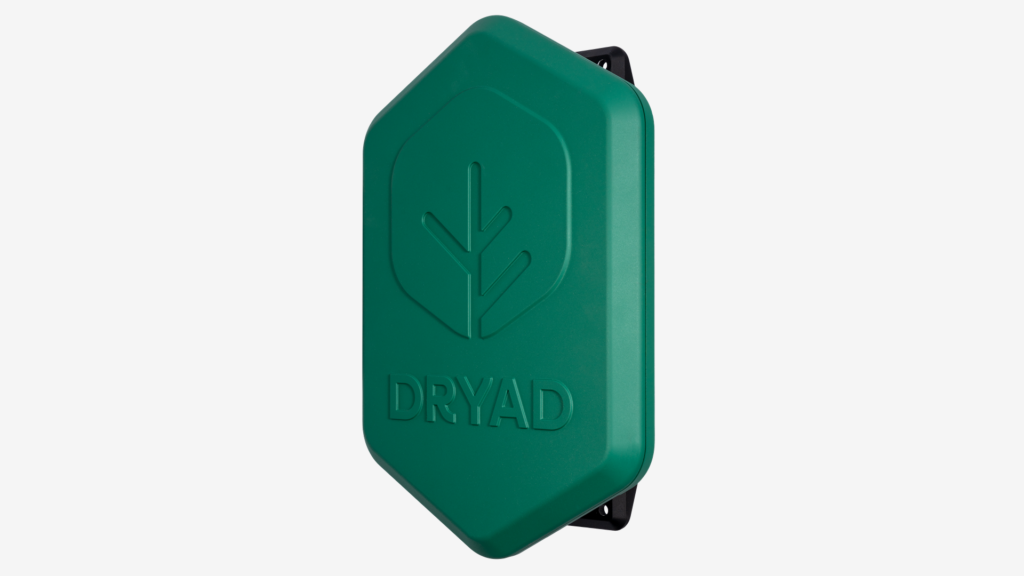
At a time of climate crisis, these systems exemplify the power of satellite IoT in enhancing forest conservation efforts and providing critical, early warnings to mitigate the impact of wildfires.
Boat and Yacht Monitoring
In the maritime sector, satellite IoT deployments are setting a new course for yacht and boat monitoring, providing seamless connectivity for vessels, whether moored in the harbour or out on the open waters. This innovation enables resilient, real-time remote monitoring and management of boats and yachts no matter how far they are from traditional communication networks, improving operational efficiency and maintenance for vessels and enhancing crew safety.
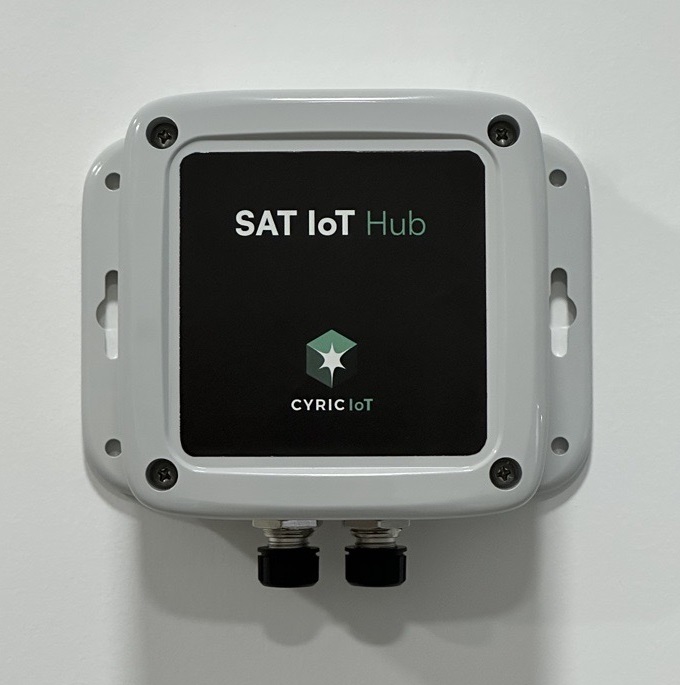
Recognising the need for easy, reliable access to the multiple sensors required for maritime monitoring and management, CyRIC IoT designed an end-to-end integrated solution. This pioneering real-world satellite IoT deployment streamlines the monitoring of all the necessary sensors to effectively oversee the condition of boats and yachts, whether docked or sailing offshore.
The SAT IoT Hub is a customisable sense and control device that can connect to a wide variety of sensors and actuators measuring critical parameters of a vessel’s condition. These can include water levels (for detecting leakage), engine and systems temperature, unusual movement or tilting, battery voltage levels and geolocation. Leveraging terrestrial LoRaWAN® and direct-to-satellite networks to send data in real-time, the SAT IoT Hub data logs all inputs to provide a comprehensive overview of the vessel’s condition over time via a bespoke IoT platform. With this consolidated approach to remote monitoring, vessel maintenance is made easy, security is reliable, and offshore journeys can be enjoyed safely.
Personal Tracking Devices
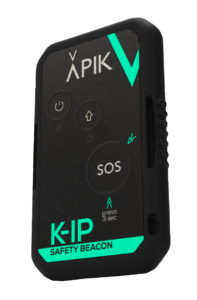 Satellite IoT is becoming a game-changer for adventurers, sports enthusiasts and anyone wanting to enjoy the great outdoors by exploring isolated regions, offering a new level of safety and peace of mind. These personal devices ensure that individuals engaging in activities like walking, running, or biking in remote areas stay connected, enabling accurate tracking and emergency assistance no matter how far off the beaten path they venture.
Satellite IoT is becoming a game-changer for adventurers, sports enthusiasts and anyone wanting to enjoy the great outdoors by exploring isolated regions, offering a new level of safety and peace of mind. These personal devices ensure that individuals engaging in activities like walking, running, or biking in remote areas stay connected, enabling accurate tracking and emergency assistance no matter how far off the beaten path they venture.
A pioneer in this area is our partner APIK. Their KIP2 Safety Beacon leverages LoRa® connectivity technology operating over satellite and terrestrial networks to ensure continuous coverage and reliability wherever an individual may be situated.
The KIP2 Beacon contains a push button alert system for sending a distress signal, which connects directly to a FIND-R device to initiate search and rescue teams. This all-weather device can be located within a 12 km range and, with an accuracy of one metre, enabling recovery in less than 15 minutes. This system can also be used without the distress signal activated if there is concern over an individual’s position or well-being. It can also operate independently of GPS or satellite, providing SOS signal transmission for all weather, all situation recovery. As the popularity of adventure sports and exploration in remote areas increase, real-world satellite IoT deployments, such as the KIP2 Beacon, will become invaluable and potentially lifesaving.
New Frontiers in Satellite IoT Applications

While EchoStar Mobile has been involved in supporting its partners’ satellite IoT deployments firsthand, there are many other opportunities across a broad spectrum of industries where leveraging direct-to-satellite connectivity, such as our pan European LoRa®-enabled IoT network, for IoT devices can deliver extensive benefits.
This section delves into other real-world satellite IoT deployment opportunities, highlighting emerging technologies and ideas under development that promise to expand the reach and impact of satellite IoT.
Supply Chain and Logistics
In the supply chain and logistics sector, satellite IoT deployments can offer enhanced capabilities for tracking and managing assets, especially in areas beyond the reach of terrestrial networks. These IoT devices enable precise monitoring of a variety of metrics such as location, temperature, humidity, and vibration of cargo, ensuring the integrity and security of goods throughout their journey.
By leveraging satellite connectivity, companies gain the ability to monitor fleet movements and cargo conditions in real-time, seamlessly across the globe, without the worry of multiple subscriptions. This level of oversight facilitates immediate response to any deviations from planned routes or unexpected changes in cargo conditions, significantly reducing the risk of loss, theft, or damage. Moreover, the data collected can inform logistical decisions, optimise routes, and improve overall operational efficiency.
Disaster Response and Management

The importance of satellite IoT in disaster response and management is growing, offering crucial support in areas lacking infrastructure. It enables the gathering and analysis of real-time data vital for managing both natural and human-made emergencies.
Using satellite connectivity and easy-to-deploy IoT devices, responders can access critical information on weather patterns, geolocation tracking for rescue teams, and asset distribution, all of which are essential for strategic planning and execution. Furthermore, it ensures the uninterrupted flow of communication, enabling accurate environmental monitoring, asset tracking, and the coordination of rescue operations. With this information supporting rapid decision-making and efficient allocation of resources during critical situations, the effectiveness of emergency operations is improved, potentially saving lives.
Healthcare Delivery in Remote Areas
Satellite IoT technology is making significant strides in enhancing healthcare delivery in remote areas, particularly through telemedicine (remote diagnosis and treatment) and logistical improvements. It facilitates real-time exchange of medical information and remote consultations, improving patient care in isolated regions.
Innovations like low-energy LoRa®-enabled IoT devices are pivotal in enhancing long-term patient monitoring with minimal maintenance, enabling continuous observation of their well-being. These advancements support equitable healthcare access, bridging the gap between urban and rural healthcare services.
Wildlife Tracking and Conservation Equipment
Recognition is growing for the benefits of satellite IoT technology to wildlife tracking and conservation efforts. By enabling detailed monitoring in remote areas, these technologies gather crucial data on animal movements, behaviours, and habitats, vital for conservation and anti-poaching measures.
For example, the ICARUS system demonstrates the power of satellite IoT, utilising mini-transmitters attached to animals for global monitoring. This approach not only facilitates the study of migration patterns but also enhances our understanding of ecosystem dynamics. Moreover, ICARUS’s innovative use of miniaturised technology for tracking offers a scalable and less invasive method to gather comprehensive data on wildlife, providing a clearer picture of biodiversity and ecological health worldwide.
Monitoring and Maintenance of Outdoor Sports Facilities
Satellite IoT deployments can also enhance sports by improving facility management, safety and fan experiences. For example, in golf, it can enable precise irrigation systems for more sustainable water use and facilitate the efficient management of golf carts, improving operational efficiency. In winter mountain sports, satellite IoT can offer ease and efficiency in maintaining ski resorts, including managing cable cars and snowcats, supporting safety and optimal performance. This technology not only helps the sustainability of sports facilities but also improves the overall experience for athletes and fans by ensuring facilities are well-maintained, and services are delivered at a high level of quality.
Other Real-World IoT Satellite Deployments
There are many other areas where satellite IoT can offer significant advantages, improving monitoring and management for better efficiency, sustainability and safety.
For example:
- Renewable energy installations like remote solar or wind farms can benefit from the critical infrastructure monitoring technology discussed.
- Construction machinery or forestry equipment operating in isolated areas can leverage satellite IoT monitoring technology to deliver real-time data and assist with asset management.
- Scientists working in challenging environments, such as the polar regions, can benefit from personal safety tracking devices and remotely monitor their equipment via satellite IoT.
The opportunities are extensive and are only likely to grow as more sectors recognise the potential of the technology and seek bespoke solutions to overcome their unique challenges.
Challenges and Solutions of Real-World Satellite IoT Deployments
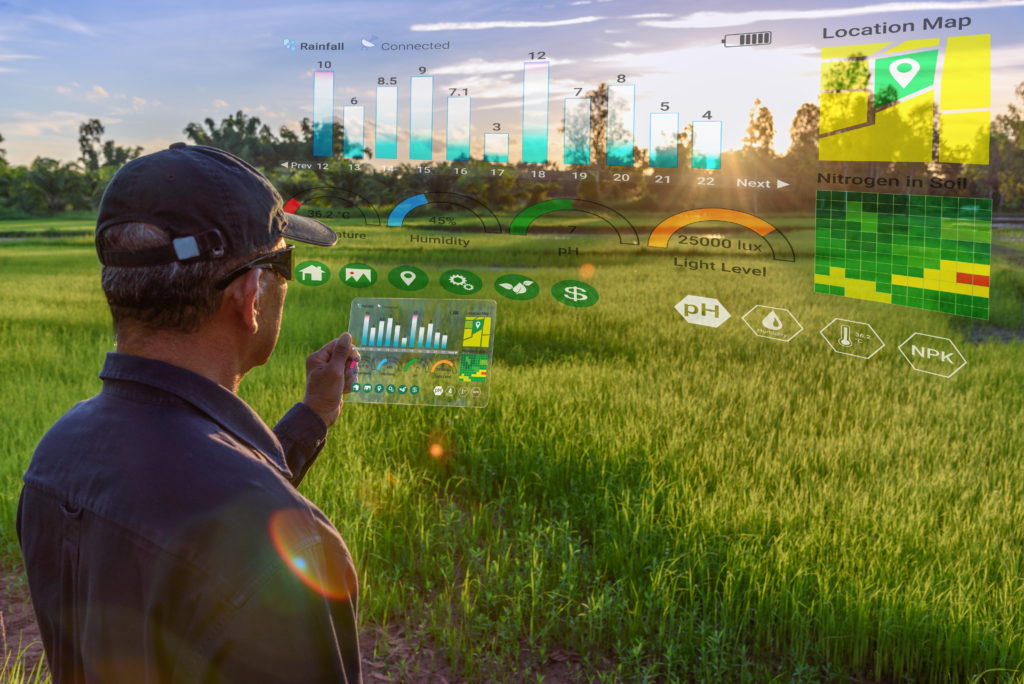
Historically, the widespread adoption of satellite IoT has been hindered by several challenges, including the absence of standardised technology, which complicates achieving economies of scale, and ensuring interoperability between satellite and terrestrial ecosystems. This lack of standardisation and the slow evolution of satellite-specific technologies have made integration with rapidly advancing terrestrial systems difficult.
Additionally, the complexity involved in integrating and operating satellite IoT solutions has led to higher device costs and the necessity for specialised engineering skills. These factors, combined with typically high service costs, have made satellite IoT less attractive for deployments compared to terrestrial alternatives despite their benefits for remote connectivity.
To tackle these obstacles, satellite providers and communication partners are developing and implementing innovative solutions. For instance, EchoStar Mobile has made strides with its LoRa®-enabled IoT network, designed to reduce both cost and power consumption while ensuring reliable data transmission over vast distances and in remote regions. This network leverages the long-range, low-power capabilities of LoRa® technology, enabling devices to communicate directly with GEO satellites, thereby bypassing the need for extensive ground infrastructure. Moreover, as a standardised network architecture, LoRa® is easier to integrate with existing IoT ecosystems.
Additionally, our ongoing research into NB-IoT over NTN (Non-Terrestrial Networks) aims to push the boundaries of what’s possible with satellite IoT, potentially offering even greater efficiencies in data transmission and power usage.
By addressing the challenges of standardisation, integration complexity, and high operational costs, providers such as EchoStar Mobile are reducing the barriers to entry for satellite IoT applications, leading towards a future where connectivity is seamlessly universal and efficient.
For an in-depth exploration of these challenges and the innovative solutions being developed, our Complete Guide to Satellite IoT offers comprehensive insights.
Final Thoughts
This guide has delved into the potential of satellite IoT across multiple sectors, emphasising its role in transforming connectivity, especially in hard-to-reach areas. It presents a vision for a future where technological advancements overcome present obstacles, making satellite IoT a cornerstone for enhancing operational efficiency and sustainability globally. As this technology progresses, adopting satellite IoT becomes crucial for industry leaders looking to lead in creating a more interconnected, efficient and sustainable future.
For any questions on EchoStar Mobile’s satellite IoT network services, please get in contact with our team.
Read Use Cases
-
- Introduction
- Section 1: The Current Landscape of Satellite IoT
- Section 2: Real-World Satellite IoT Deployments
- Critical Infrastructure Monitoring
- Remote Smart Water Metering
- Smart Agriculture
- Environmental Monitoring
- Boat and Yacht Monitoring
- Personal Tracking Devices
- New Frontiers in Satellite IoT Applications
- Supply Chain and Logistics
- Disaster Response and Management
- Healthcare Delivery in Remote Areas
- Wildlife Tracking and Conservation Equipment
- Monitoring and Maintenance of Outdoor Sports Facilities
- Other Real-World IoT Satellite Deployments
- Section 3: Challenges and Solutions of Real-World Satellite IoT Deployments
- Final Thoughts


